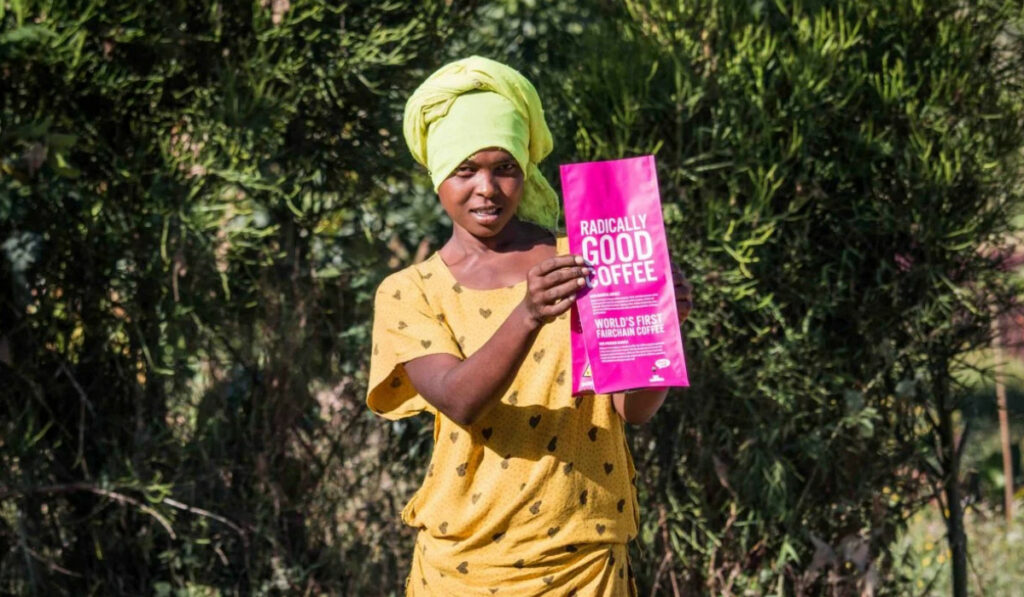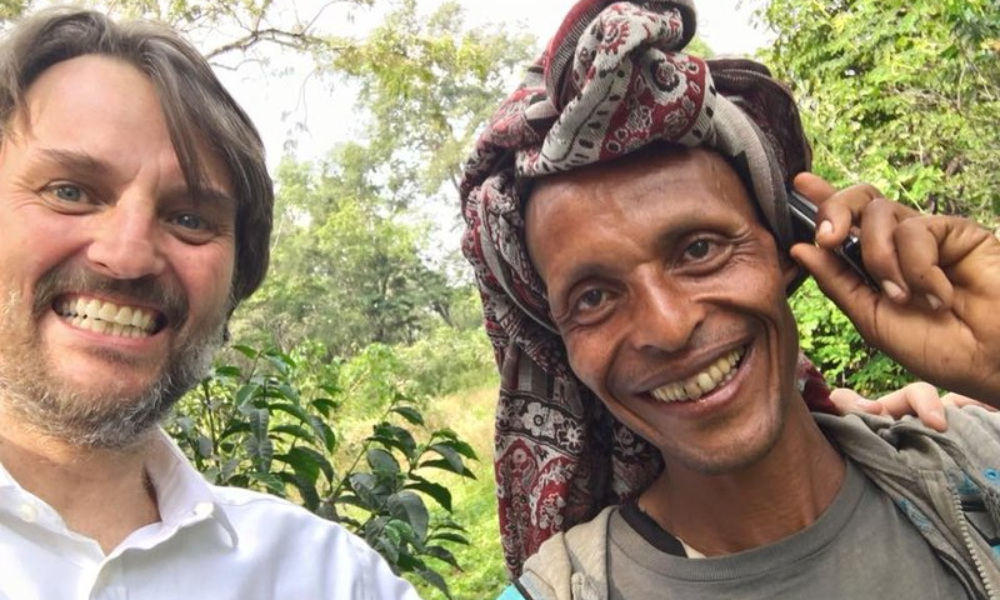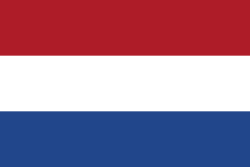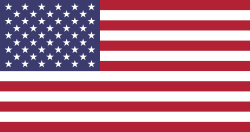Fouder Guido:
'Growth? I want the model to be right'
Source: MT SPROUT
Written by: Niels Achtereekte
In 2019, Guido van Staveren van Dijk bought back his company Moyee Coffee from investors 'after things blew up' due to a financing model that hindered the impact objectives. An intervention that was essential for the system change he envisions.
The management buyout that Guido van Staveren van Dijk did, fell just before the corona pandemic. As well as some solid investments because the prospects were good. With plummeting income, the company went through the eye of the needle, but now there is again plenty of room to puzzle over the change model that underlies the coffee company.
'I wasn't really looking for a company, growth and making money. I want the model to be figured out. Paying a farmer a little more doesn't solve the problem. A system change is needed.'
Moyee Coffee's FairChain Principles
With the puzzle, the entrepreneur refers to the FairChain principles he devised, aimed at radical transparency. Van Staveren van Dijk wants to initiate industrialization in the countries of origin, so that added value is created there, instead of just taking raw materials away.
His goal is to have a purpose-market fit ; to give a company a purpose and not a gimmick in the form of a competitive advantage. 'That you really clean up the mess.'
That started with the shared value chain – not only earnings for the entrepreneur, but also for the supplier – and that with positive external effects. That brings a whole new dynamic, says Van Staveren van Dijk. More is needed.
It turned out that the 20 percent premium that coffee farmers received on the market price is not enough if you really want to have a living income. 'That requires a holistic approach.'
Money alone is not enough for farmers
At first, the farmers simply got the money. 'I didn't want to be a kind of neo-colonist and tell them what to do with it.' However, my own research showed that the gap between what was offered and what people could actually live on was much bigger.
Training to increase crop yields was a first step, followed by more attention to berry quality. But more was needed. For example, many farmers were working with too few plants or with plants that were near the end of their life cycle.
'We started investing in seedlings and looking at residual flow valorisation of the pulp that comes from berries. Such as biomass and later the higher-quality pectin.'
That's how everything fits together, he wants to say. Biomass does well on the CO2 ladder of your company, but pectin yields almost as much as coffee and the sugary residue that remains from production can be used to produce cattle feed. 'With that you can help fatten up the scrawny cows and the poop from that is much better for fertilization.'
By scaling up such activities with the help of (subsidies from) governments and NGOs, the necessary ecosystem starts to organize itself, Van Staveren van Dijk outlines. Hands-on, but from a theoretical framework based on literature – names such as Thomas Piketty (economic inequality) and Kate Raworth (the doughnut economy) are mentioned – and making things measurable within the company, he emphasizes.
Friction with investors
Meanwhile, Moyee as a company started to shift. It grew and made a profit. Or in Van Staveren van Dijk's words: residual value arose for which he wanted to develop a redistribution model.
Some of the investors he brought in in the early years raised eyebrows. After the entrepreneur unveiled plans to start a new distillery ('While the current assets were not yet full') and to make the transition from the premium to a living income, friction arose. 'When you develop a change model, you cannot stop halfway because you are making a profit.'
Moreover, the fun would be over for him. 'I really saw it as my artwork. That becomes an ego thing.' What followed, went along the 'classic line': does this phase suit a founder ? Shouldn't there be a COO? 'The impact objectives were hampered by the way the company was financed.'
Besides wanting to finish the puzzle, Van Staveren van Dijk also strategically did not believe they should pull the handbrake. 'We will definitely go through a phase in which good storytellers with big budgets can grow fast, but after that we come to story proofing and you can no longer get away with a half story.'

Guido van Staveren van Dijk bought the company back
And so Van Staveren bought the company back from Dijk. 'That hurt a bit, because although I started the company for 100 percent, I was only a 30 percent shareholder.'
Since then, he has been the sole owner of the brand and has a smaller stake in the first roastery. A healthy split between a club that is more interested in the emerging Ethiopian market and one that has its hands free to perfect the impact model, he believes. A customer-supplier relationship.
It proved to be an important lesson in thinking from the old and new economy. 'I had brought an old banker on board, almost as a joke, to take him through the new economy. Intellectually we were pretty much on par . Until we started making profits and the memory metal from the eighties started to kick in.'
Brooding on a new business model
He is currently working on a business model based on value sharing. Not only between owner, staff and supplier, but also the customer. According to him, the increasingly popular steward ownership model is not sufficient. 'I miss the entrepreneurial fire there. It is mainly about keeping an eye on the tent. I also want to attract people who are willing to take risks.'
The entrepreneur wants to make everything hyper-transparent, he repeatedly emphasizes. Reason to continue to hammer on the use of blockchain. 'If everyone in the chain – the farmer, the roastery, us as Moyee and you as a customer – receives a token per kilo of coffee, we can see at the end of the year how much residual value there is left and divide it. I started Moyee for that kind of experiments.'
It's not that far yet, but there are pilots going on, such as with the coffee packages sold via Albert Heijn. With this, consumers can donate a coffee plant to a farmer with a token per package. 'As I said, these plants are super important: they yield an extra tenner of coffee and also make your coffee carbon positive. So that coffee solves problems.'
Why haven't we heard so much about it yet? It's a challenge to get the whole story compact and to convey it, thinks the entrepreneur. 'Many people don't know the story about living income yet. Sometimes it seems like we have to go back to that first. We don't have the money to do big brand campaigns.'
Being present at Albert Heijn is a risk
Being present at an AH may provide visibility, it is also a risk, Van Staveren van Dijk counts. You are asked because you are relevant to the shelf. But he also immediately got 'hassle with my crowd ' that they would be sell-outs . That is why the action with the blockchain is so important, he says.
'Everything is set. Nothing has changed for the country of origin, we are making a contribution here. In the classical sense, that is not a smart thing to do. But if we can prove that our specialty coffee with impact also holds up in retail, then the difference between five hundred and five thousand stores is realistic and we will have something left over.'
Such an impact activation is also necessary, because the budgets are not sufficient to advertise in an Allerhande, he continues. And it pays off. 'There are eighteen thousand people who have planted a tree, of which five thousand have left their details for updates.'

Internationalization of Moyee Coffee
In addition to further developing the model, scaling up and internationalization are on the agenda for the near future. For example, the roasteries will supply white label coffee, several tenders have been won for the business market and discussions are ongoing with Tesco, Whole Foods and Carrefour for the retail market. 'In Turkey we are working on local distribution.'
How do you maintain focus day-to-day ? 'I'm not one for dotting the i's and crossing the t's, but I can do many things at once. That it's a seven, but not a four. That's difficult for the team. I shouldn't burden them too much with tokens and decentralised finance .'
That's why there's more segmentation, he adds. Like one person responsible for the corporate market, another for the entire supply chain , one for the hospitality industry, the United Kingdom, etc. 'We're too small for the tablecloth and too big for the napkin, so I can't hire people from a Cargill for a ton and a half.'
Most important lesson from Guido van Staveren van Dijk
This new phase the company is in, brings with it a financing need. Something that has to happen next year, says Van Staveren van Dijk. And that brings him to his most important learning : being too naive about the financing part and ownership. 'I already thought it was really cool that I got people on board with the purpose and didn't think about who would be in control when critical choices had to be made.'
In other words, he would have liked to see that everyone who gives money – 'financing is super important' – should stay in their own part. 'If you put a euro in somewhere, you should be able to see that a euro from the entrepreneur is also going in. Maybe not in cash, but in contribution to the success of the ecosystem. If you then want to expand the old-fashioned way to 33 percent, 45 percent because there are risks or it can be diluted later, then your thinking is not right.'
'Because it didn't feel like my company, but like a movement, I wanted to share it with others. But at the moment when critical choices have to be made and you only have 30 percent... yeah, fuck !'
A profitable company
The fact that his company is profitable again is reassuring. Residual value that provides room for progress and new revenue models – or rather impact models.
For example, twelve thousand farmers are currently being ‘digitalized’ in Ethiopia and 7,400 in Kenya. And their customers, the big coffee buyers, are being onboarded, with the Moyee case being proof that it is a profitable model.
'We attract them with our story from 2017: traceability, knowing where the coffee comes from. For us a hygiene factor, but an indispensable first step. Because after that you can no longer get away with the farmer earning too little from it.'
This is how Guido van Staveren van Dijk wants to change the system with Moyee Coffee
- By providing theory, such as studies on the living income, you can gain insight into where the gap is between reality and how it should be. From there you can start to close the gap.
- Storytelling is important, but storyproofing is even more so. Using blockchain, all transactions are recorded and insight is gained into how the company distributes value.
- The blockchain can also be used to record and manage ownership, allowing consumers to become co-owners.
- Making an impact is only possible if a company is also financed in the right way. According to Guido van Staveren van Dijk, the risk that classic models will hinder impact when making a profit is high.
- Avoid conflicts of interest. By separating the roasting of the coffee from the coffee brand itself, Moyee is free to build the ecosystem and the roastery can focus on developing the local market.
- Paying suppliers more is not enough for a living income. Often education is needed, investing in seedlings and setting up local ecosystems.

